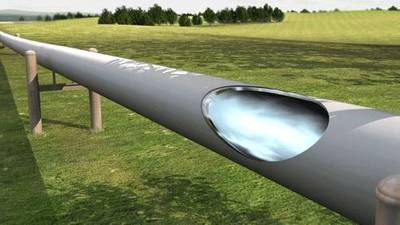Experimental Data Released to Enhance CO2 Pipeline Design
First-of-its-kind data relating to the depressurisation of CO2 pipelines is being made freely available today through industry cooperation. This will help fill knowledge gaps associated with the safe and reliable pipeline transport of CO2 and result in cost efficiencies through a significantly improved design basis for CO2 pipelines.
With energy security and climate change high on the international agenda, Carbon Capture Utilisation and Storage (CCUS) is again gaining momentum. The DNV GL-led CO2PIPETRANS joint industry project (JIP) that is now releasing new data focuses on the transportation component of CCUS projects.
Computer simulations of gas dispersion are used to assess the consequences of an accidental release from a pipeline. “Previously, CO2 pipelines have been designed using unvalidated computer simulations of CO2 dispersion due to the lack of experimental data. This uncertainty contributes to an unnecessary gold-plating of the pipelines," says Project Manager Jock Brown, DNV GL – Oil & Gas, speaking at the GHGT-12 conference in Austin, Texas.
“This new data is one step in the right direction. It builds on the success of previous experimental data released by DNV GL and can be used by the CCS industry and designers to validate computer simulations used in CO2 pipeline design, thus optimising the design process,” he continues.
The datasets contain the results of depressurisation tests on a CO2 pipeline collected at the DNV GL Spadeadam test site in the UK as part of the second phase of the CO2PIPETRANS JIP started in 2011. The data and other material supporting the use of the data can be downloaded free of charge from DNV GL’s website.
In addition to making datasets for model validation publicly available, the JIP also involves work to improve the understanding of CO2 pipeline propagating cracks and corrosion rates with various CO2 stream impurities.
“This project is one of around 30 joint industry projects we run annually, bringing together industry players in a neutral environment to close technical knowledge gaps and fast track innovation. We have a strong track record of industry collaboration on CCUS, for example through the CO2RISKMAN. The CO2PIPETRANS project will drive the technology price curve down and help speed up the roll out of CCUS technology,” says Elisabeth Tørstad, CEO of DNV GL – Oil & Gas.
The CO2PIPETRANS JIP consists of 15 partner organisations: Arcelor Mittal, BP, DNV GL, Endesa (ELE.MC), ENI, E.ON Ruhrgas, Gassco, Gassnova, Health and Safety Executive (HSE) UK, Maersk Oil, Petrobras, Petroleum Safety Authority (PSA) Norway, Shell, V&M Deutschland, and Vattenfall.
The DNV GL Recommended Practice ‘DNV-RP-J202 Design and Operation of CO2 Pipelines’ will be updated to reflect the new knowledge and help ensure that the highest safety standards are met when transporting CO2. This RP is one of a number of widely-adopted industry guidelines developed by DNV GL for CO2 handling, such as Recommended Practices for CO2 Capture, CO2 Pipelines and CO2 Geological Storage.








